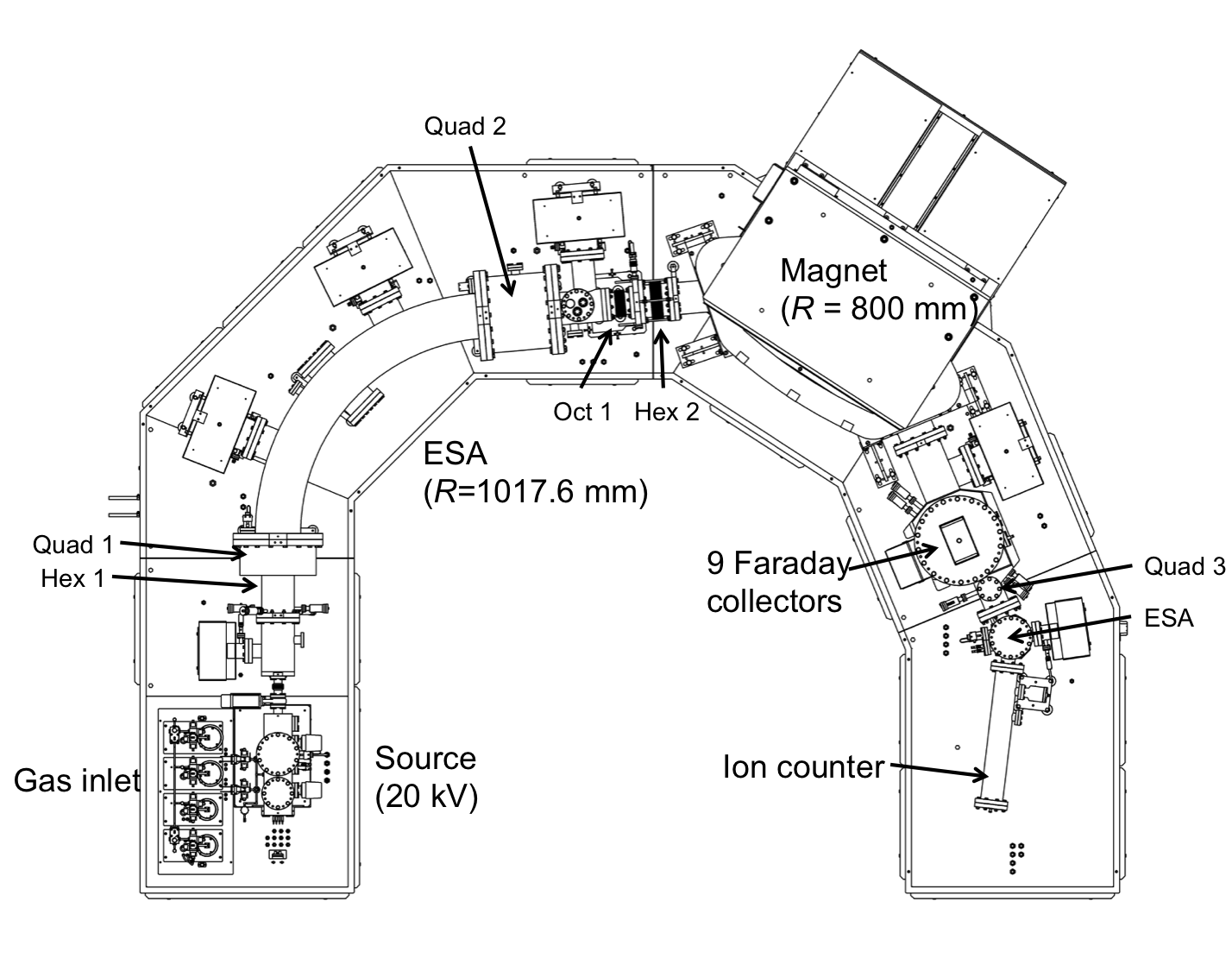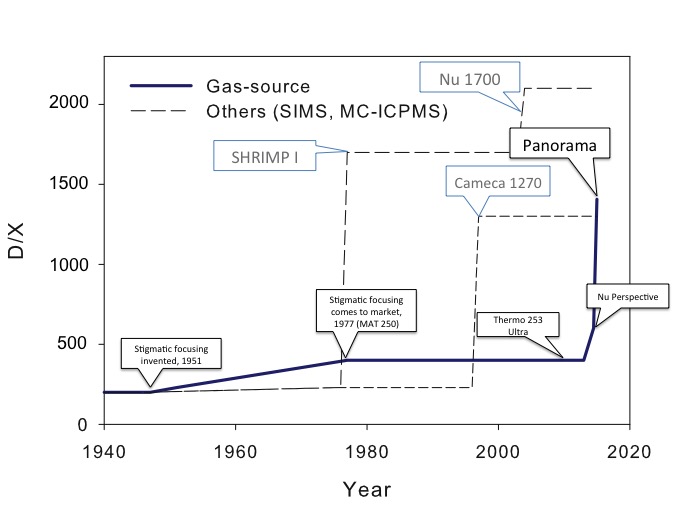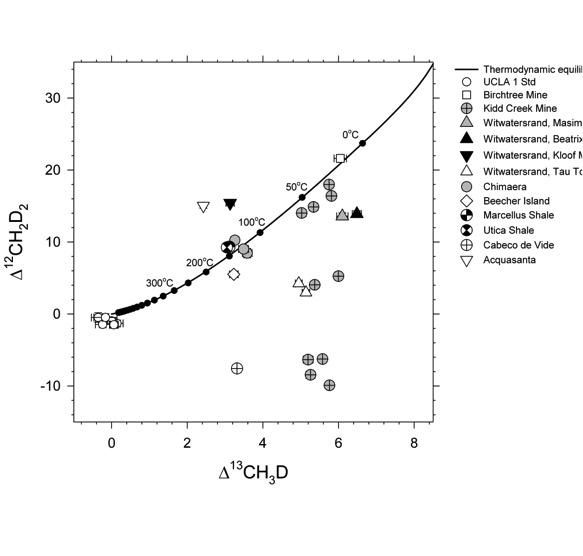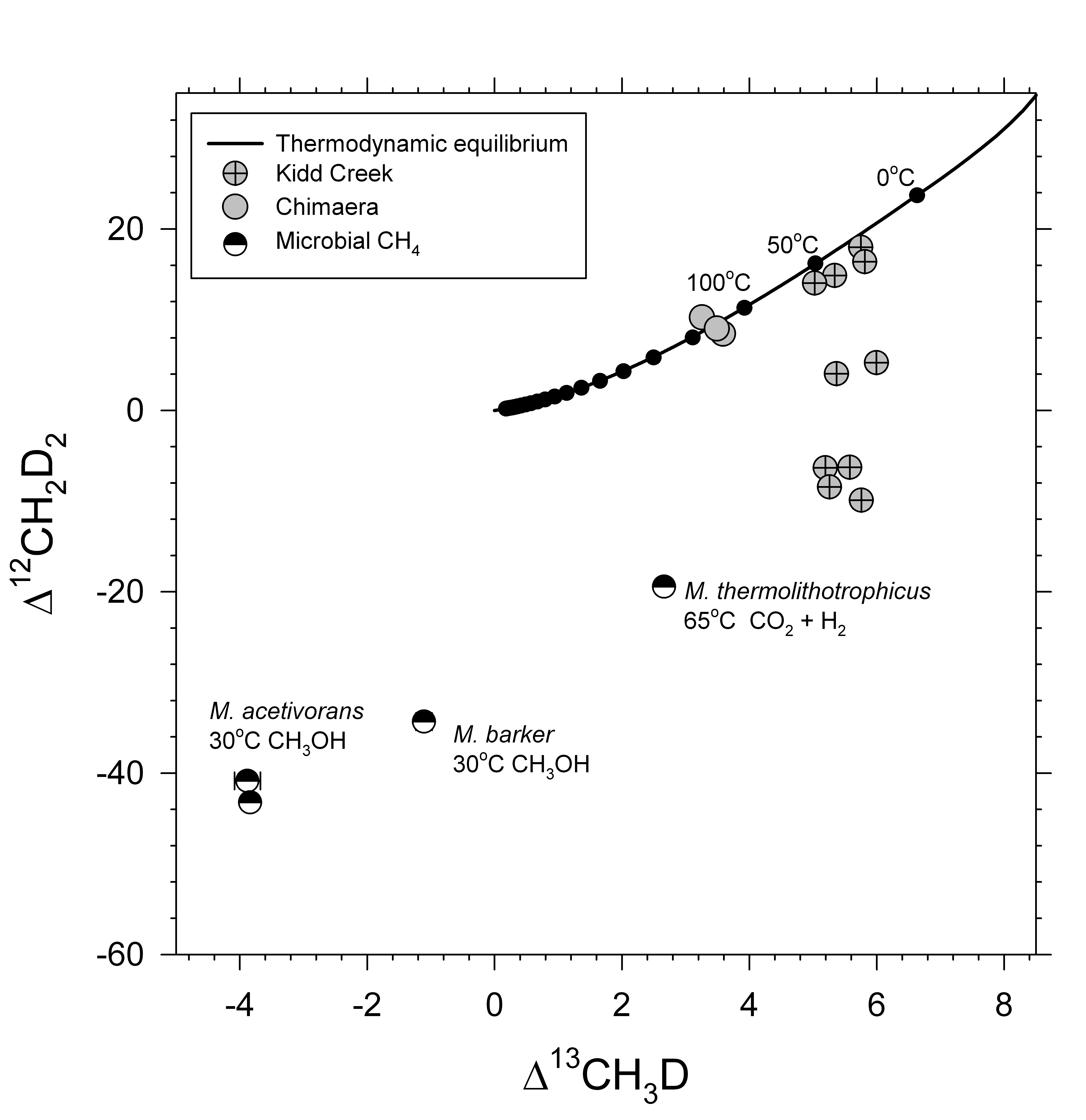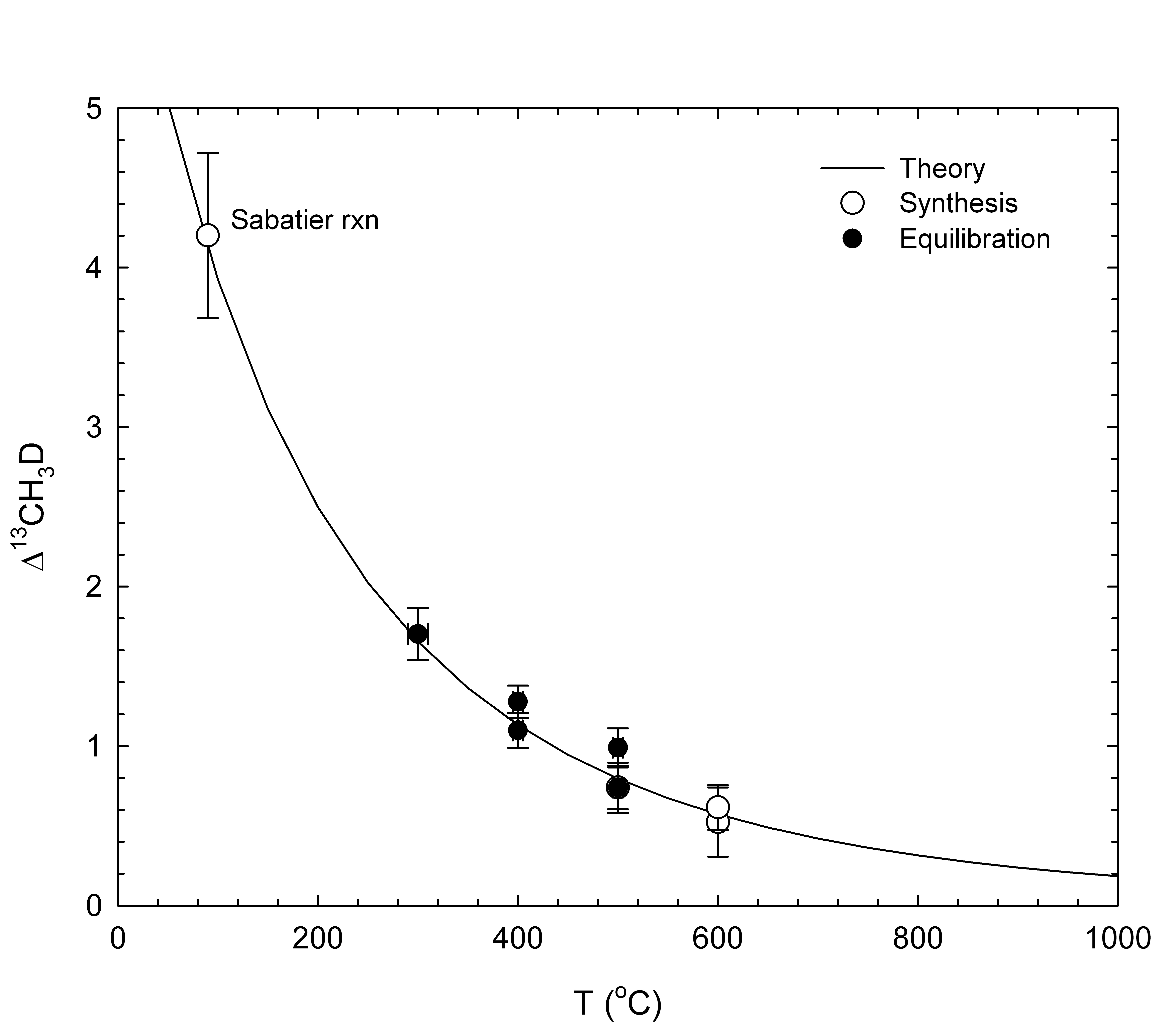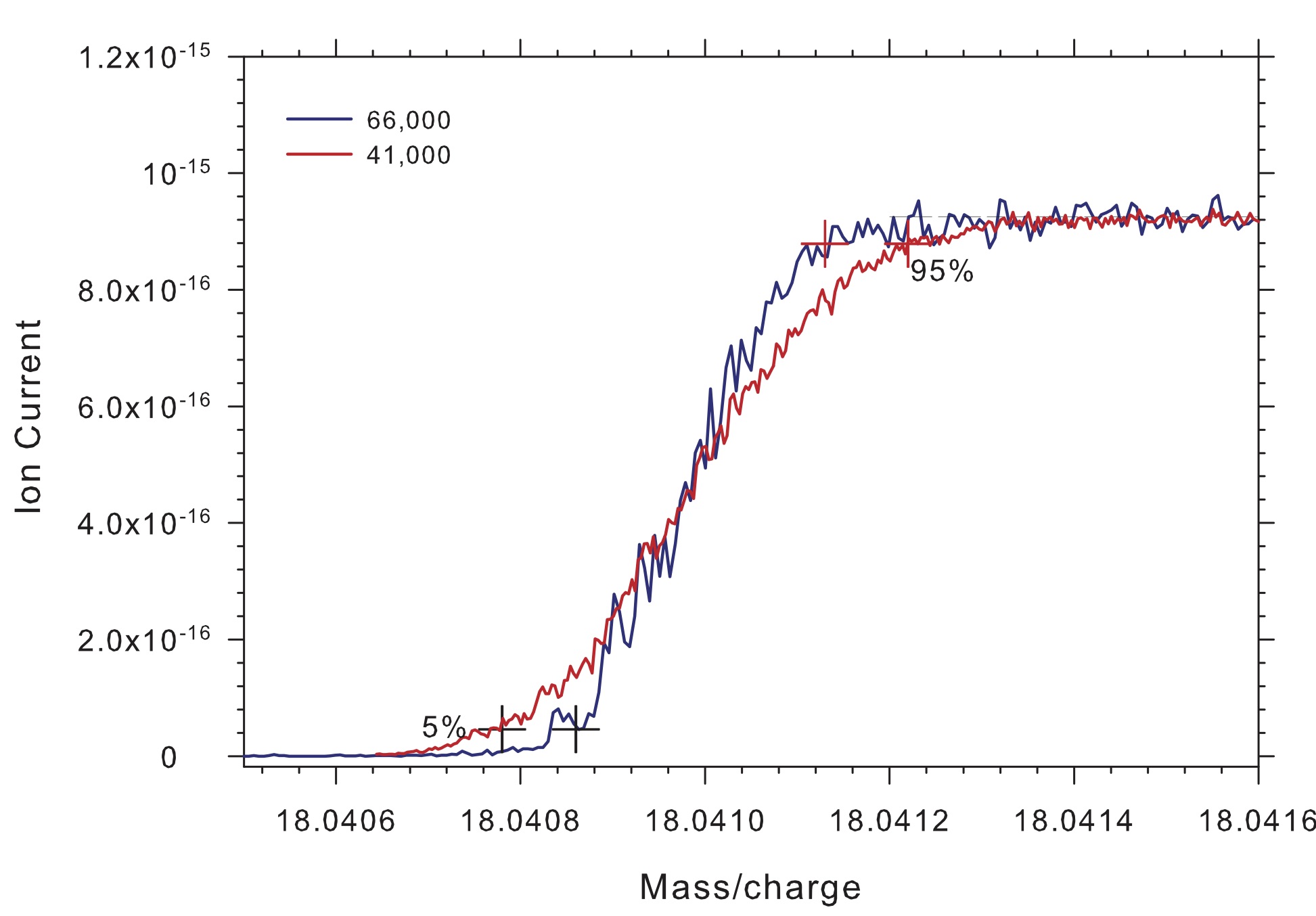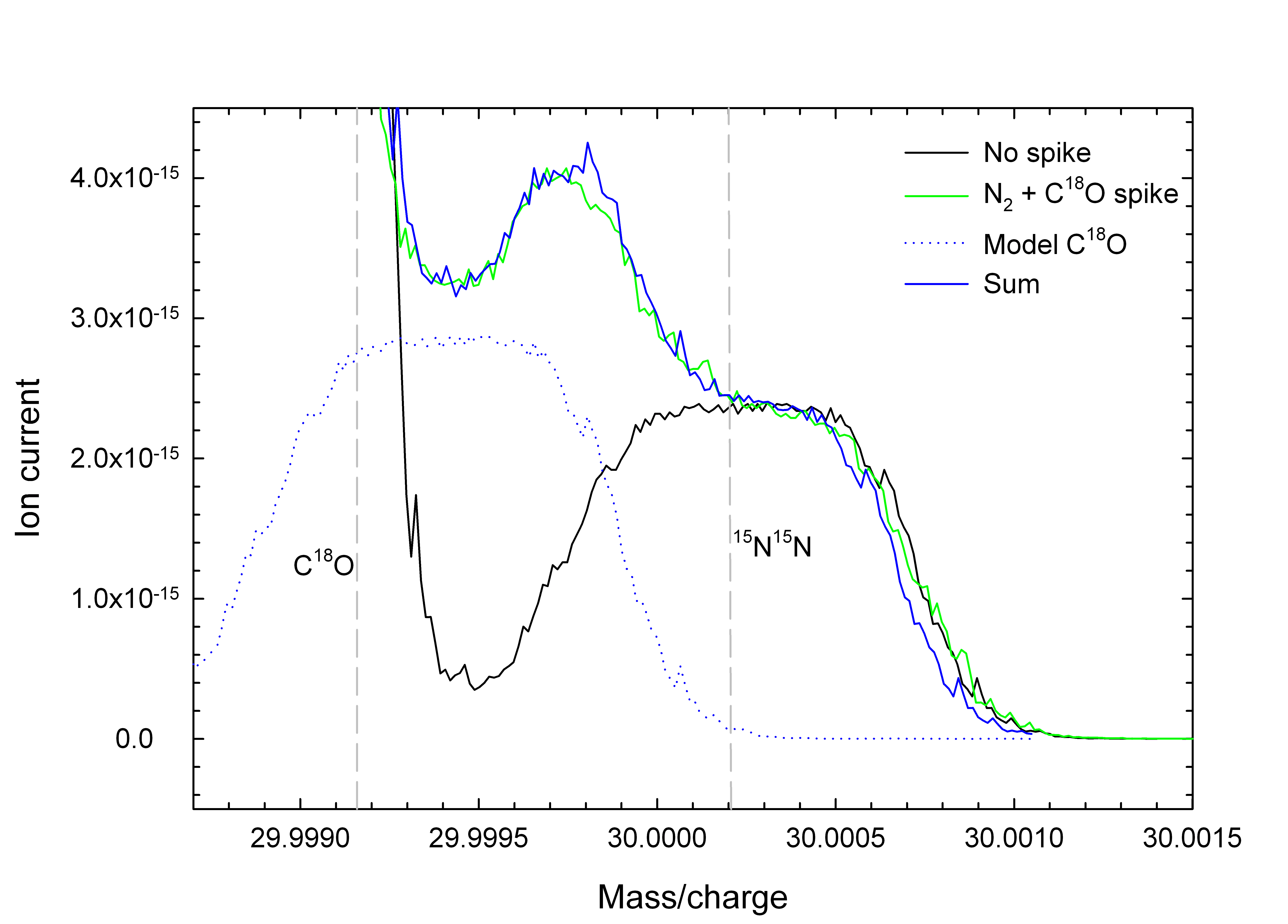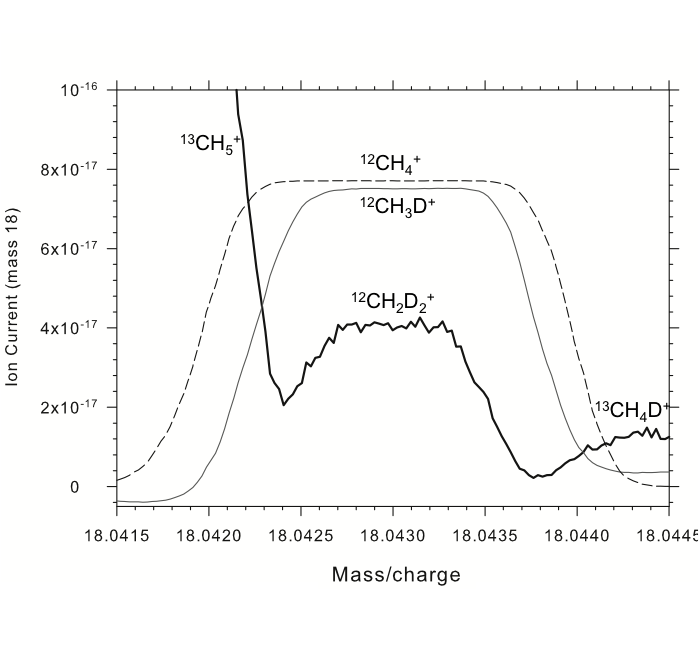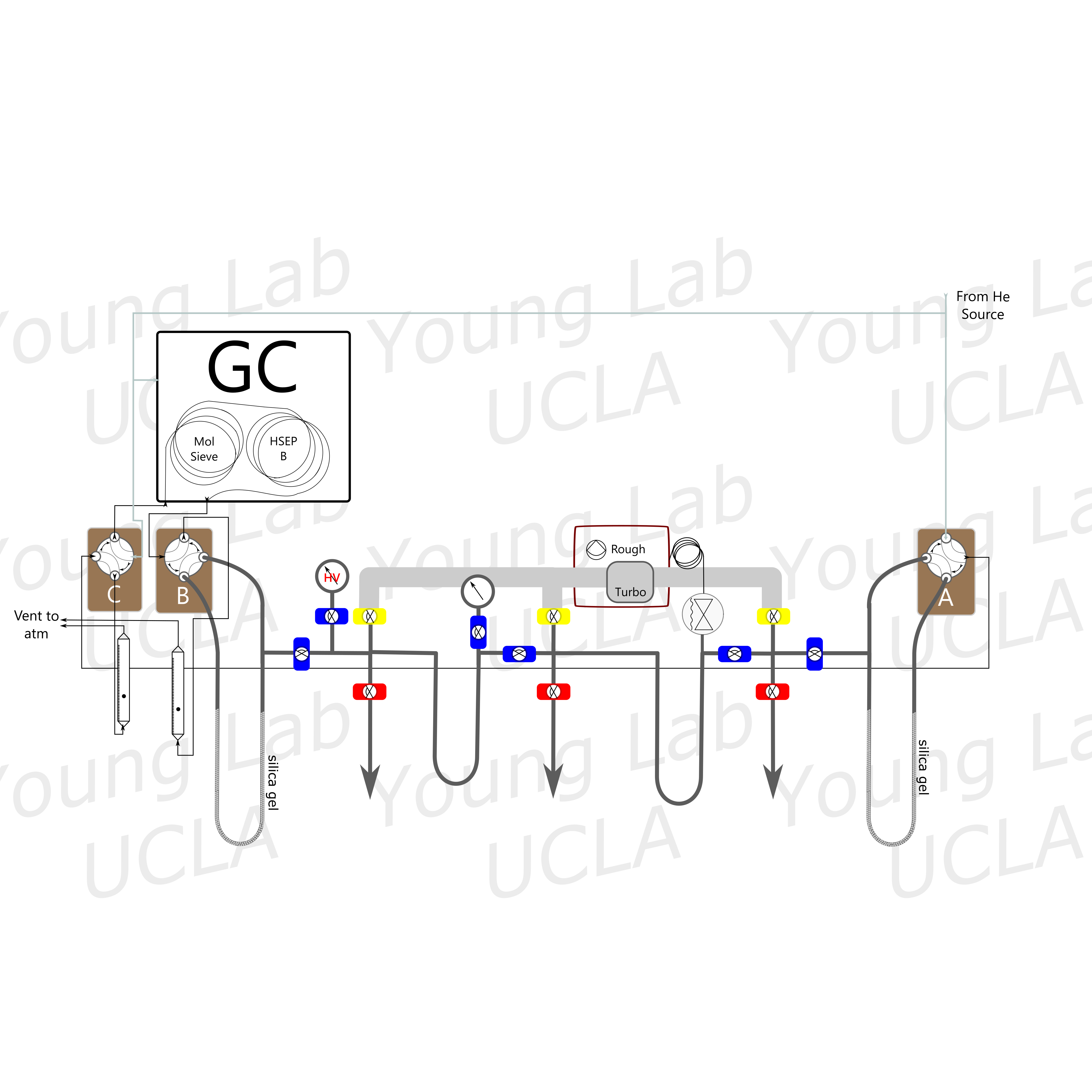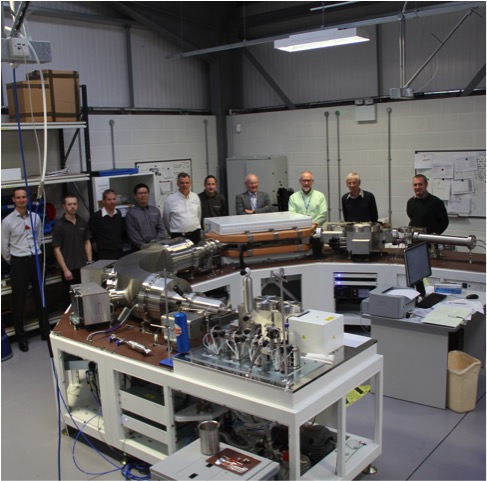Panorama Mass Spectrometer
Background
The Panorama project began in 2010 as a collaboration between
UCLA, Carnegie Science's
Geophysical Laboratory, and Nu Instruments.
The goal was to construct a gas-source isotope ratio mass spectrometer capable of
separating multiply-substituted isotopologues of various gases with high fideltiy.
 The design is based on Matsuda optics that affords extraordinary high mass resolving power.
The instrument also features continously variable collector slits. The Panorama is described in a paper that appeared on the cover of the
International Journal of Mass Spectrometry (see link at right).
The instrument occupies a unique place in
the annals of mass spectrometry as it is the only large-geometry (meaning high dispersion/magnification, or D/X)
gas-source mass spectrometer built as of 2017. The instrument layout is shown here (click to magnify):
The design is based on Matsuda optics that affords extraordinary high mass resolving power.
The instrument also features continously variable collector slits. The Panorama is described in a paper that appeared on the cover of the
International Journal of Mass Spectrometry (see link at right).
The instrument occupies a unique place in
the annals of mass spectrometry as it is the only large-geometry (meaning high dispersion/magnification, or D/X)
gas-source mass spectrometer built as of 2017. The instrument layout is shown here (click to magnify):
The history of isotope ratio mass spectrometers in terms of D/X (ultimate mass resolving power) versus the year of commissioning is shown below (click to magnify):
The Panorama was installed at UCLA in March of 2015. It was funded through the Deep Carbon Observatory ( Sloan Foundation), the National Science Foundation EAR, The Department of Energy Office of Science, UCLA, Carnegie Science, and Shell Projects and Technologies Inc. - Emerging Technologies Group. A movie showing the installation process is avaible here:
Applications
We have used the Panorama to explore the uses of rare, multiply-substituted isotopologues of CH4,
N2, and O2.
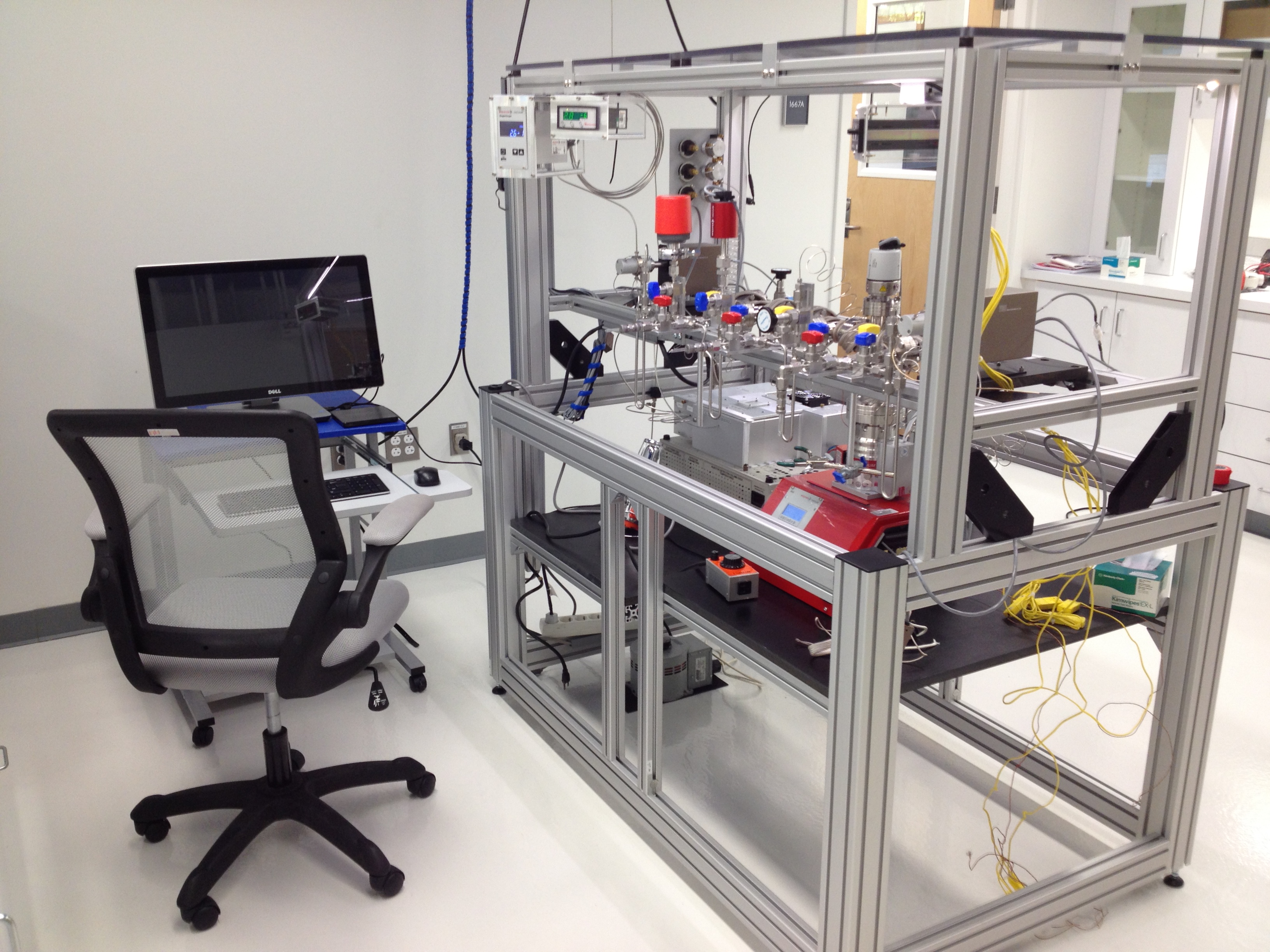 These applications are the first of their kind and are made possible by the high mass
resolving power of the instrument and the continously variable collector slits.
We use a vacuum extraction line with two GC columns in series to purify methane for analysis (pictured at right).
These applications are the first of their kind and are made possible by the high mass
resolving power of the instrument and the continously variable collector slits.
We use a vacuum extraction line with two GC columns in series to purify methane for analysis (pictured at right).
Various diagrams summarizing our first results are shown in the gallery below (click each individual figure to enlarge). The diagrams include plots of departures from equilibrium in both 13CH3D and 12CH2D2. These departures are diagnostic of various methane formation and destruction pathways. Locations of various sample sites are also shown here.
The gallery below (click to enlarge) shows several plots illustrating the Panorama's mass resolution capabilities. Also shown is a diagram of the vacuum extraction line pictured above and some photographs of various components of the Panorama.
Panorama Man Pages
A collection of manual pages for the Panorama can be accessed here. These pages are currently work in progress and are password protected.



